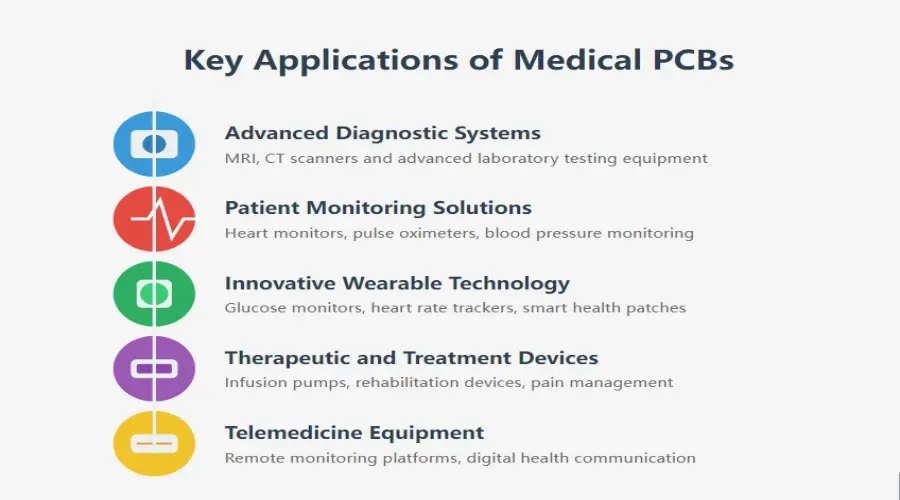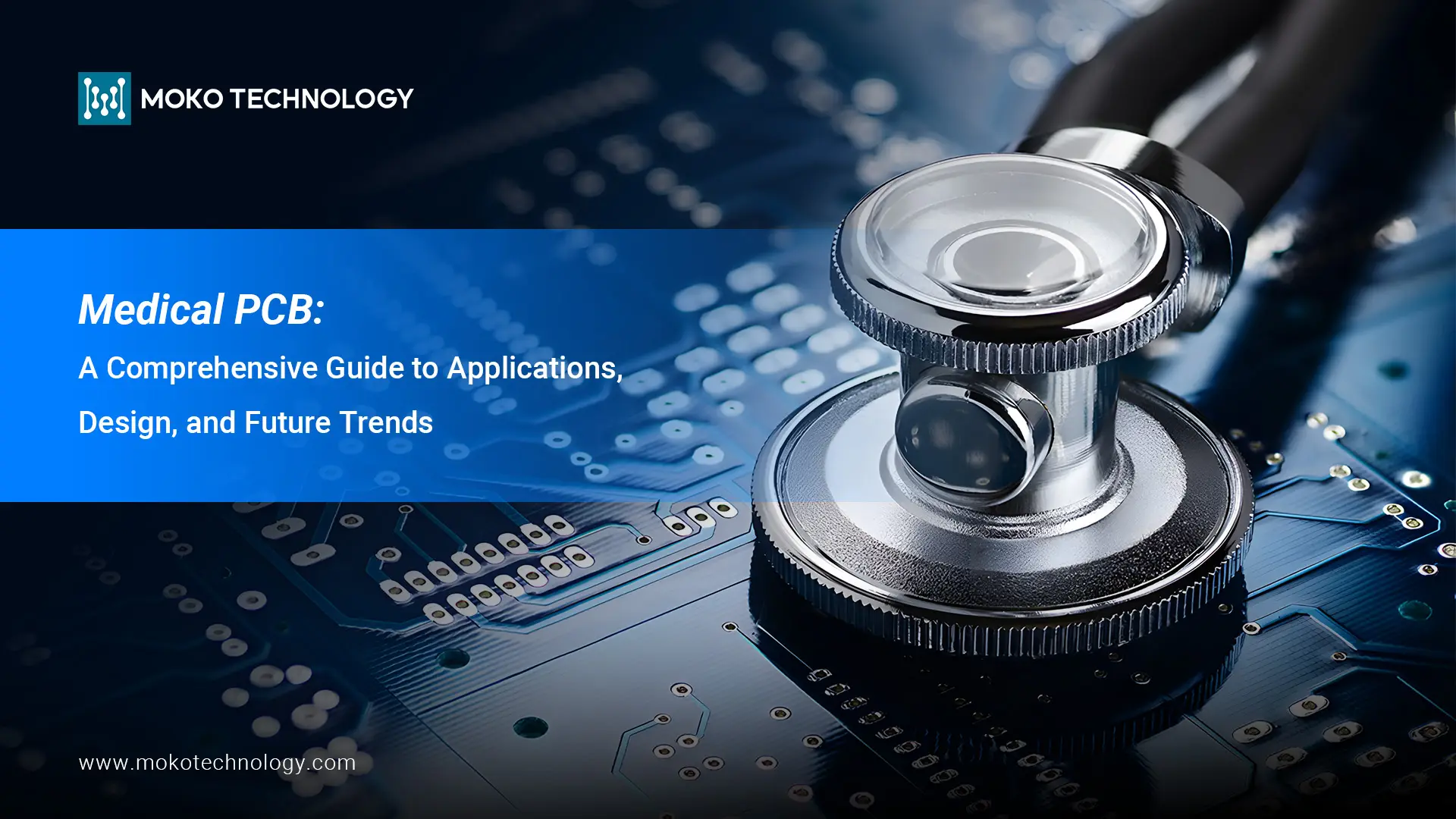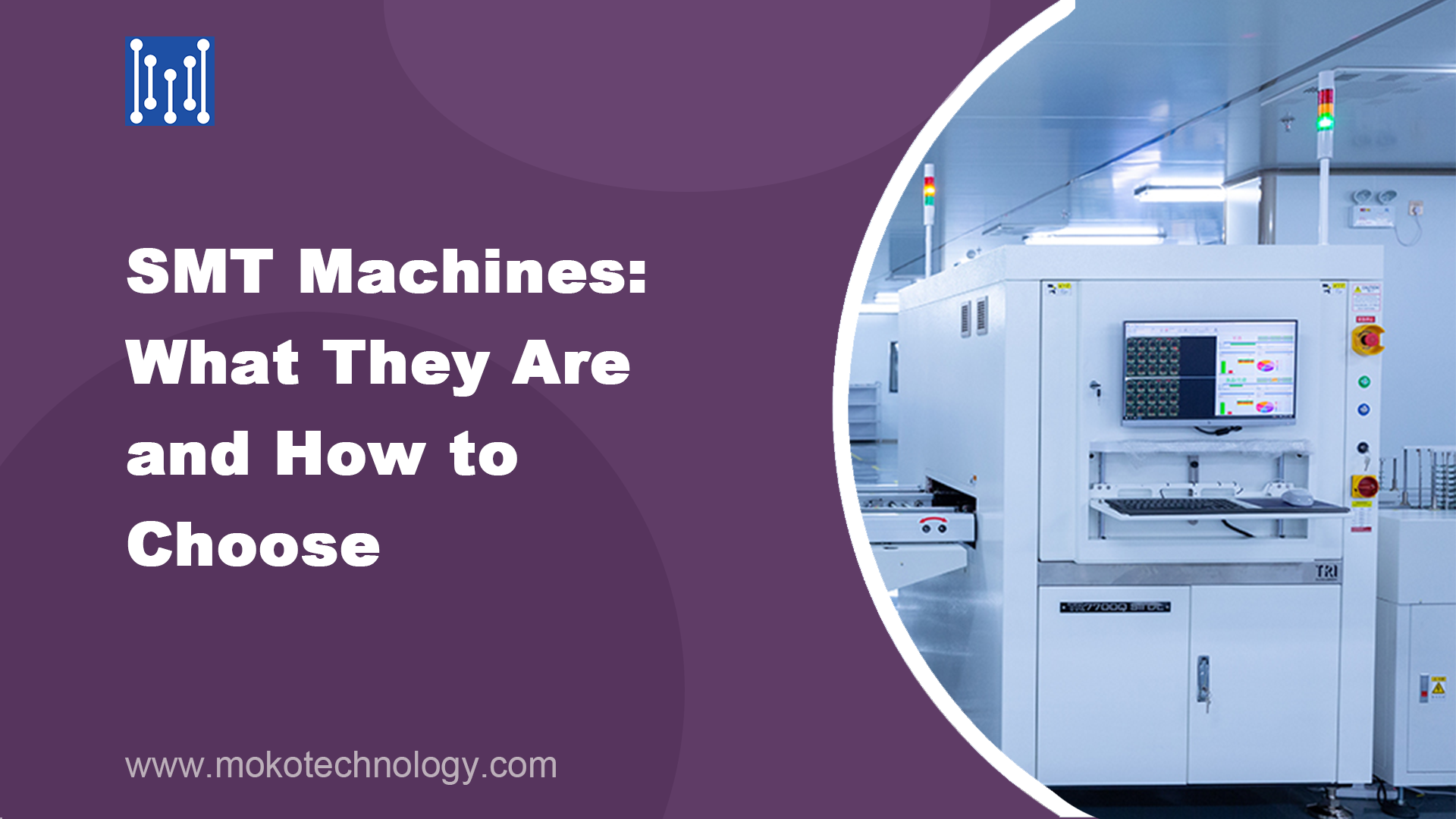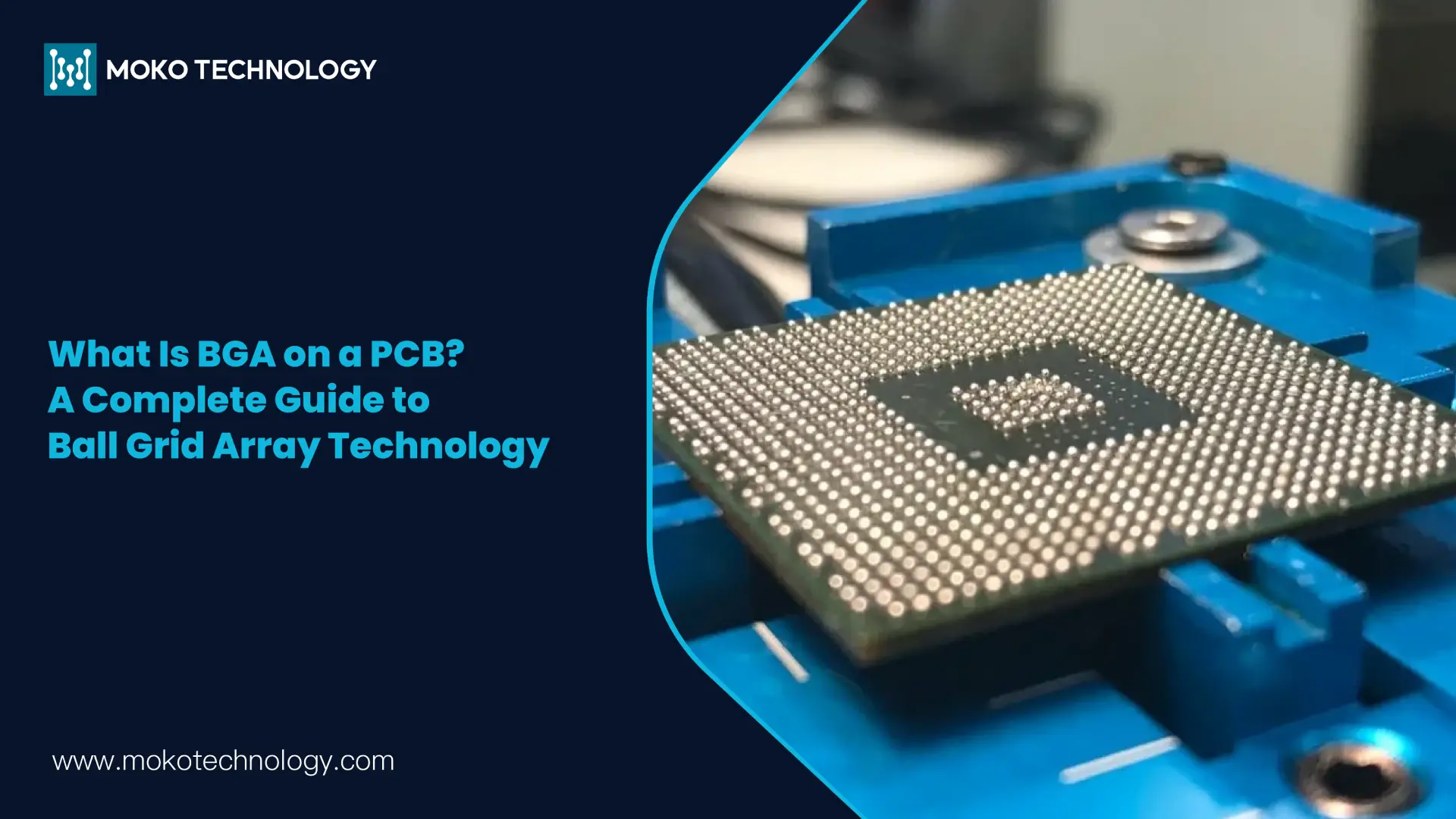The rapid development in the medical and healthcare industry leads to an increase in the demand for medical PCB. No matter whether it’s large medical equipment or portable devices used for daily health management purpose, all of them have to use these small but important circuit boards to do work and fulfill functions. This guide will take you through what medical PCBs are, key applications, tasarım konuları, and future trends for the industry.
What Is Medical PCB?
Medical PCBs are specialized printed circuit boards designed specifically for medical devices and equipment. Standart PCB'lerin aksine, medical PCBs must be manufactured to tolerate the most stringent quality standards and have the most stringent regulatory requirements, Örneğin., FDA approval, ISO 13485 sertifika. These PCBs are engineered to make sure functionality of signal integrity, and to ensure patient safety in the critical practise.
Key Applications of Medical PCBs
The medical PCBs are widely used in different applications, below we list some of the typical ones:
- Advanced Diagnostic Systems
All modern equipment with diagnostic capability needs precision engineered PCBs to get accurate results. These boards allow sophisticated medical imaging and analysis capabilities from MRI, CT scanners and advanced laboratory testing equipment.
- Patient Monitoring Solutions
Medical grade PCB supply power to critical care equipment that processes complex physiological data for real-time patient assessment in critical care settings. The applications are heart monitors, pulse oximeters, and blood pressure monitoring systems.
- Innovative Wearable Technology
Medical circuit boards have greatly miniaturized wearable healthcare devices which have now revolutionized wearable healthcare devices such as the small sized continuous glucose monitors, heart rate tracking system, and smart health patches.
- Therapeutic and Treatment Devices
A medical PCB is an indispensable part in therapeutic equipment such as precision controlled infusion pumps, rehabilitation devices and pain management.
- Telemedicine Equipment
With integrated wireless capabilities, medical printed circuit boards support remote healthcare delivery through patient monitoring platforms and digital health communication systems, making healthcare more accessible and efficient.

Design Considerations for Medical-grade PCB
- SMD vs PTH Components
When assembling medical PCBs, Yüzey Montaj Teknolojisi (SMS) is more popular than through hole technologies, as it is beneficial for size reduction and component density. Plated-through-hole (PTH) technology still has a place in power supply boards or other such things, but SMT is easier to make and assemble as it eliminates the need to drill through holes.
Recommend reading: Delikten Vs. Yüzey Montajı: Doğru Yöntem Nasıl Seçilir?
- Reliability and Longevity
Medical PCB boards need to maintain consistent performance during their entire working life, spanning several years of continuous operation. This demands that critical components are able to withstand environmental stressors, and that thermal management can be achieved even in a small package. bu sırada, high-quality solder masks and surface finishes are necessary to protect against wear.
- Materials Selection
When designing medical PCB, a key factor that should be considered is the material selection. Bir taraftan, the material used must comply with RoHS. Diğer yandan, the substrate material should be compatible with the RF signals and the high frequency transmission requirements. son olarak, select materials according to connectivity requirements and physical constraints of the device housing.
- Signal Integrity and Noise Reduction
To ensure the signal integrity, when designing medical PCBs, it’s critical to route signals correctly, to use proper impedance matching, and EMI/EMC shielding. When placing components, try to minimize crosstalk and put the high-frequency circuits separated from sensitive analog sections.
- Test and Debug
Testing is an essential step that can ensure the functionality and reliability of medical devices. Bu nedenle, we can strategically place test points on signal traces, clock and control signals and power lines to facilitate testing and debugging. Dahası, placing test points on outer board faces simplifies circuit verification both during manufacturing and in the field.
Challenges in Medical PCB Design and Manufacturing
1. Stringent Regulations Compliance
Medical PCBs must comply with strict regulations such as FDA requirements, ISO 13485 sertifika, and RoHS compliance, which ensures the patient safety and device reliability. ancak, it’s not an easy task to get all these certifications. Manufacturers must maintain extensive records of materials, süreçler, and testing procedures.

2. Miniaturization of Components
As medical devices shrink in size, more features must fit into smaller spaces, thus there is a growing demand for more functionality in smaller form factors, yani, uzay, for PCB designers to tackle. The problem of component placement becomes critical where in one needs to have exact spacing but maintain signal integrity as well as preventing electromagnetic interference.
3. Zero-defect Manufacturing Requirements
Medical PCBs have to meet controlled quality norms due to its critical applications. All should be tested and the procedures established to ensure that all finished goods meet specifications. We cannot afford to accept minor defects which compromise device functionality and patient safety; it is mandatory that devices are 100 per cent tested.
4. High Production Cost
Achieving medical grade means there is a lot of upfront investment into expensive specialized equipment, clean room facilities and personnel. This makes production costly, requiring high quality components, lots of testing and detailed documentation.
Üst 3 Trends in Medical PCB Technology
Innovations in Manufacturing Technologies: Advanced technologies like additive manufacturing and bendable substrates are changing the game of PCB production. They make it possible to have more sophisticated implantable and wearable medical devices, and open up new possibilities in patient care.
Integration of IoT and Smart Technologies: More medical devices are becoming interconnected, thanks to the rise of the Internet of Things (IoT) in healthcare. Advanced communication protocols and consequent data processing demands will have to be supported on medical PCBs to enable real – time monitoring and evaluation of data.
Sustainable Device Design: The development of medical PCBs is being reshaped by increasing environmental stewardship. Manufacturers are looking at energy efficient designs and environmentally sensitive materials while shuttering to medical standards. Circular manufacturing practices are becoming common in the industry, including a shift towards using recyclable materials such as copper and aluminum, lowering waste and minimizing an environmental footprint.
Choose MOKO Technology As Your Medical PCB Manufacturer
MOKO neredeyse 20 years of experience in offering medical PCBs to customers. Proje boyunca sizinle yakın bir şekilde çalışarak tek elden tıbbi PCB hizmetleri sunuyoruz., PCB tasarımından, imalat, montaj, test yapmak, tedarik zinciri yönetimine, ve pazar sonrası hizmet. ISO9001 sertifikasına sahibiz:2015 ve ISO13485, bu, kalite sistemimizin ve üretim sürecimizin tıp endüstrisinde yüksek bir standarda ulaşabileceği anlamına gelir.. Bize ulaşın today to get a free quote!




